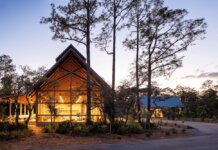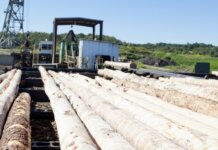
Dr. Matthew Niemiller has been awarded a five-year, $1.029 million National Science Foundation grant to study groundwater biodiversity in the central and eastern United States.
“Groundwater, which is water found in aquifers below the surface of the Earth, is one of the world’s most essential natural resources,” says Niemiller, who teaches biology at the University of Alabama in Huntsville. “For instance, of all the unfrozen freshwater on Earth, 97% is estimated to reside in groundwater aquifers.”
Groundwater is essential for agriculture and drinking water, he notes, but it is a challenged resource — damaged or depleted not only by farming and human consumption but also by mining and urbanization.
His study will focus on biodiversity within the groundwater.
“Because human-sized caves only offer a small window into a complex subterranean environment and can be particularly challenging to access and study, we know relatively little about the vast majority of subterranean species,” Niemiller says.
But his study can take advantage of newer techniques, such as environmental DNA, to learn more.
“We can now collect a sample from water, soil, a spiderweb or a flower, for example, then isolate and extract the DNA of organisms from that sample to identify, monitor and study a single species or the community of organisms living in various habitats,” Niemiller says.
“We have the potential to leverage DNA from a groundwater sample to learn much more about entire populations and communities of organisms that are living in caves and other subterranean habitats, such as determining levels of genetic diversity and searching for species new to science,” he says. “The darkness and stable environmental conditions in many groundwater habitats may promote long-term persistence of eDNA and recovering of longer DNA fragments.”
In addition to the UAH scientists, elementary school students will be involved in data collection, collecting samples from caves, springs and wells to be studied in Niemiller’s lab and in the elementary students’ classrooms.
Click here for more information on the project.



